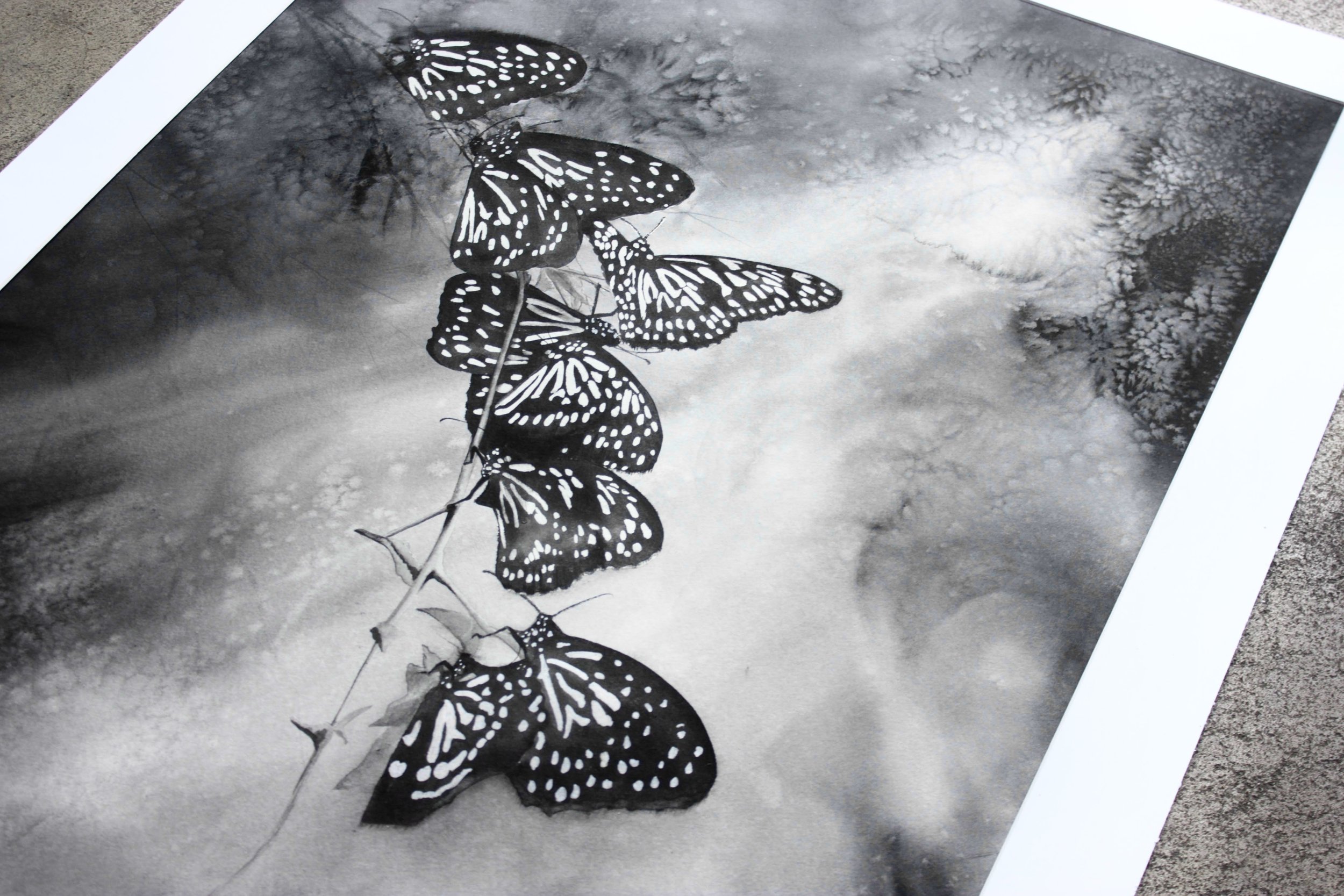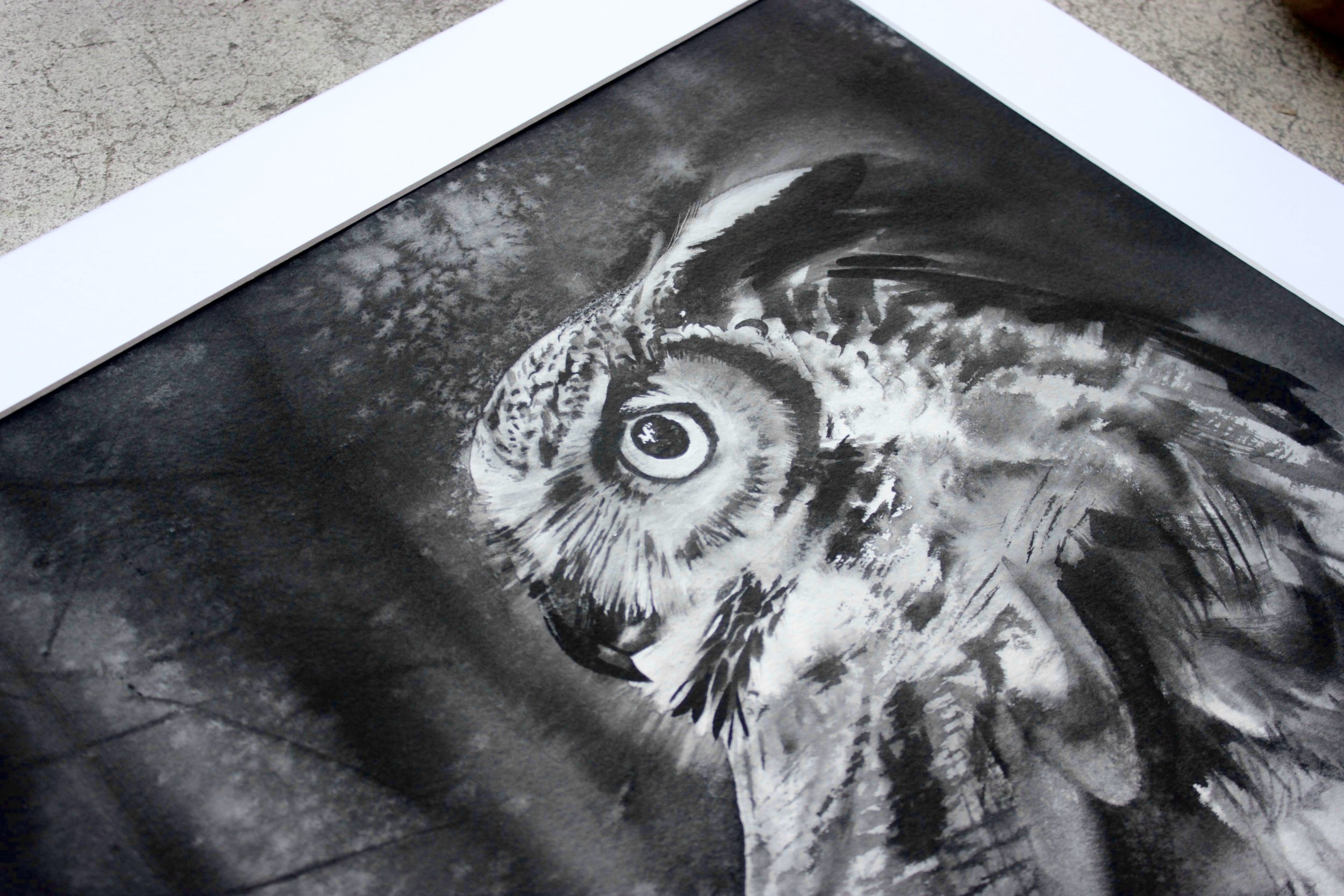In the Absence of Color
Color has long been celebrated in the arts, historically and culturally, and now more than ever, artists have access to such a vast array of both natural and synthetic pigments.
So begs the question, why would I choose to paint with a single shade of black in many of my works?
To fully understand the answer to this question, I should first share that before painting in watercolor, I spent my former years as a photographer. My first exposure to photography was love at first sight during a year abroad as an art student where I visited a photography exhibition at La Maison Européean de la Photographie in Paris.
If you are anything like me, art has a way of speaking to the soul. It resonates within us, whether it be to the subject or to the medium. Occasionally, both, and when that happens, it’s a soul-captivating moment that somehow seems inexplicable and compelling. That was and still is, black and white photography for me.
Once I began painting, rather than retiring old notions and lessons learned from my days in photography. I found I naturally adapted photographic techniques to the way I would conceive and create a painting. Composition, contrast and the use of light to name a few, focusing in on the photographic elements I wanted to try and achieve. Since I naturally gravitate toward black and white images, within a short time I found myself questioning whether it was acceptable within the world of watercolor to create paintings exclusively in black. It wasn’t much longer till I decided, if there was a rule, I was going to break it!
Outside of the simple fact that I have a passion for black and white images, here are some unique benefits I believe the absence of color can provide.
Enhanced Texture and Detail:
Without the distraction of color, black and white draws attention to the fine details in fur, feathers, skin, and other natural textures. The contrast between light and shadow becomes more pronounced, highlighting subtle patterns that might otherwise go unnoticed.
Strong Contrast and Mood:
Black and white images often carry a dramatic, timeless quality. High-contrast lighting can create striking visuals, accentuating the ruggedness of a forest or an animal’s features.
Focus on Composition:
By stripping away color, the viewer’s attention shifts to composition, shapes, lines, and tonal balance. This can lead to more powerful, minimalist images where form and structure take center stage.
Snow Leopard, Watercolor, 2024
Emotional Impact:
Black and white images can evoke a range of emotions more intensely. It often feels more raw and authentic, making it ideal for capturing the essence and spirit of nature.
Timelessness:
Color trends come and go, but black and white images often have a classic, enduring appeal. They feel less tied to a specific era, which can make wildlife portraits for example, feel classic.
Creative Freedom:
Just like shooting in black and white, painting exclusively with black pigment allows for more artistic interpretation. I can push contrast, tones, and play with light in ways that might look unnatural in color but feel cohesive in monochrome.
Creating emotive and impactful artwork is at the core of my desire to paint and though I go through cycles of painting in color, I know that there will always be something personally compelling and satisfying about a bold yet delicate black and white painting I create.
To end, I’d love to share my favorite black watercolors with you! Both are from Daniel Smith and you can find their paints at most art supply stores. I use Lamp Black for the majority of backgrounds and areas of solid color. I use Lunar Black more sparingly, a super granulating pigment perfect for texture.




